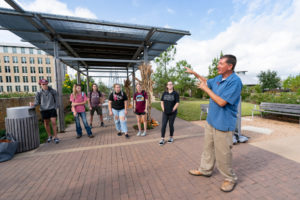Texas A&M confers the most agriculture undergraduate degrees
College of Agriculture and Life Sciences strengthens related industries through well-rounded former students
The Chronicle of Higher Education has announced that Texas A&M University conferred the most bachelor’s degrees in agriculture, agriculture operations and related sciences from 2018-2020.

The data, sourced from the U.S. Department of Education, looked at the number of degrees awarded from July 1 to June 30 of each period. Beating the closest competitor, Iowa State University, by more than 300 degrees each year, the college conferred 1,128, 1,074 and 1,061 degrees, respectively, from 2018-2020. Other top schools include California Polytechnic State University, Kansas State University and the University of California at Davis.
Opportunities for students
“We have the best and brightest former students working across diverse industries in Texas and beyond,” said Chris Skaggs, Ph.D., associate vice chancellor for stakeholder relations and associate dean for student development in the College. “A degree from the College of Agriculture and Life Sciences not only connects you with 550,000-plus former students who serve as a network to endless career possibilities, but it inserts you into an existing culture of excellence, innovation and community within the agriculture and life sciences.”
Skaggs believes the popularity of earning an agriculture-related degree at Texas A&M and the associated high graduation rate is not only a reflection on the College’s high quality instructors, but also on the learning opportunities provided to students.

“The College strives to provide our students with a first-class education, leadership opportunities and experiential learning activities found in laboratories and high impact programs such as internships, undergraduate research and study abroad,” said Skaggs. “These opportunities help expand the scope of the education offered to our students and contribute to them making a difference in the world following graduation.”
Agriculture and the life sciences have been an integral part of Texas A&M since 1876, when it was founded as the Agricultural and Mechanical College of Texas. Today, the College of Agriculture and Life Sciences is widely recognized as a leader in dozens of academic disciplines. The achievements of its students, faculty and staff are improving nutrition and agriculture worldwide. From long-established majors such as agronomy and animal science to newer programs such as forensics and spatial sciences, the College offers nearly 90 degree programs.
—


